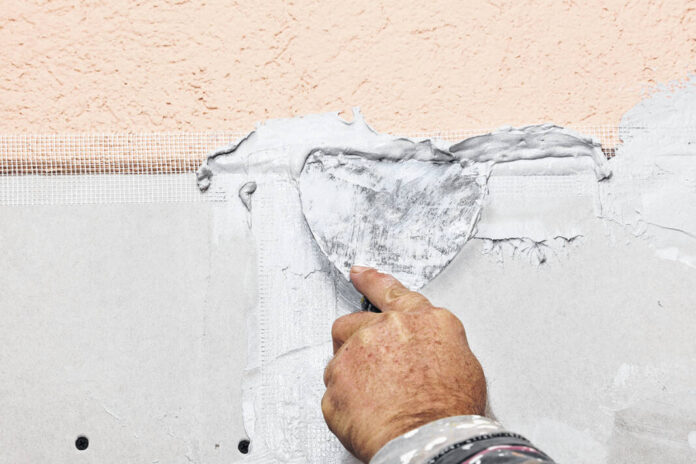In nearly all American homes built in recent memory, you’re probably familiar with drywall, which is by far the most popular wall material in the nation. Quickly installed, solid, and with a distinctive sound when you tap on them, drywall is a great choice. However, it’s not the only interior wall material you might come across. Indeed, it’s a relative newcomer to the grand scheme of construction. Until about 80 years ago, most home interior walls were made from plaster. You won’t often see plaster installed today, but you often come across it in older homes. Here’s a rundown of the pros and cons of both.
Drywall attributes
Drywall has been the go-to building wall material because of its durability, ease of installation and relatively low cost. It takes wallpaper very easily when needed. It can be installed in one day, even as a DIY job, it’s easy to paint, and you can select a wide variety of sizes and types. Drywall panels can easily be cut to fit specific needs. It’s also easy for a homeowner to repair tiny cracks or damage to drywall and paint over it almost like it was never there.
Drywall does have some disadvantages. It’s a little more susceptible to mold and water damage, can crack or be damaged as the foundation settles, and dust from cutting it can irritate the lungs (so use masks, glasses and safety gloves when cutting it.) And while it can match any flat surface easily, it’s a lot more difficult to use drywall on curved walls.
The average drywall installation job costs about $1-$3 per square foot, and repair jobs run around $50-$75 per square foot, or you can DIY for $10-$30.
Plaster’s purpose
Plaster has been used as a critical building material for centuries and still works well for interior walls. It uses a paste that hardens as it dries. Workers apply plaster in multiple layers to strengthen it, then smooth or texture the final layer of the wall.
Plaster is still occasionally used for specific purposes, a creative texture, or to fill an area drywall can’t easily cover. Its versatility gives it the opportunity to create unique outcomes. Plaster is mold-resistant and a natural insulator compared to drywall due to its thickness. Its most notable downside is that it is much more time-intensive and labor-intensive to install; all those layers of plaster take a lot longer to lay down than hanging a drywall sheet. But it brings durability, as plaster is meant to last for centuries. You will have some trouble hammering in nails for decorating, though!
Installing plaster can be two to five times more expensive than drywall. Expect to pay $2-$10 per square foot for plaster installation. You’ll pay $10-$100 per square foot for repairs.
Tweet your home care questions with #AskingAngi and we’ll try to answer them in a future column.







